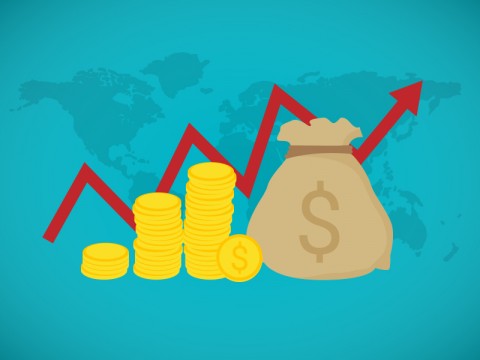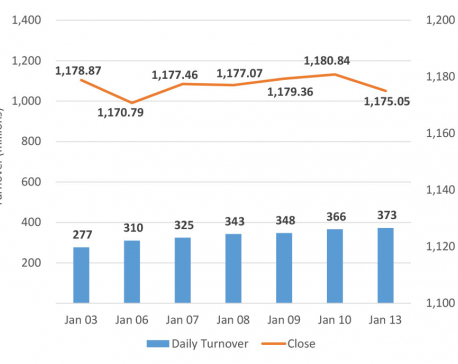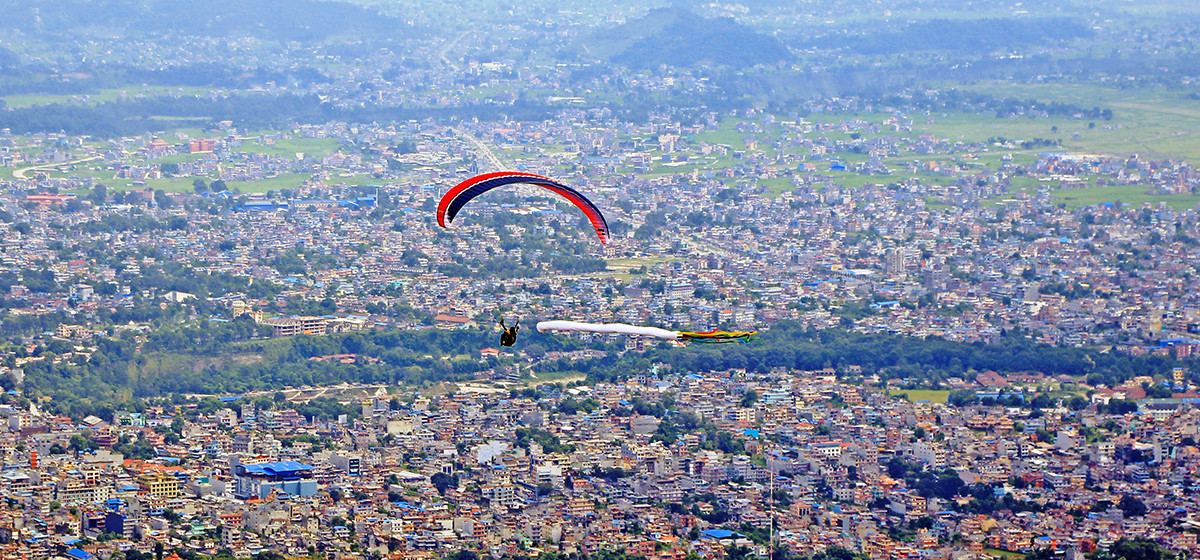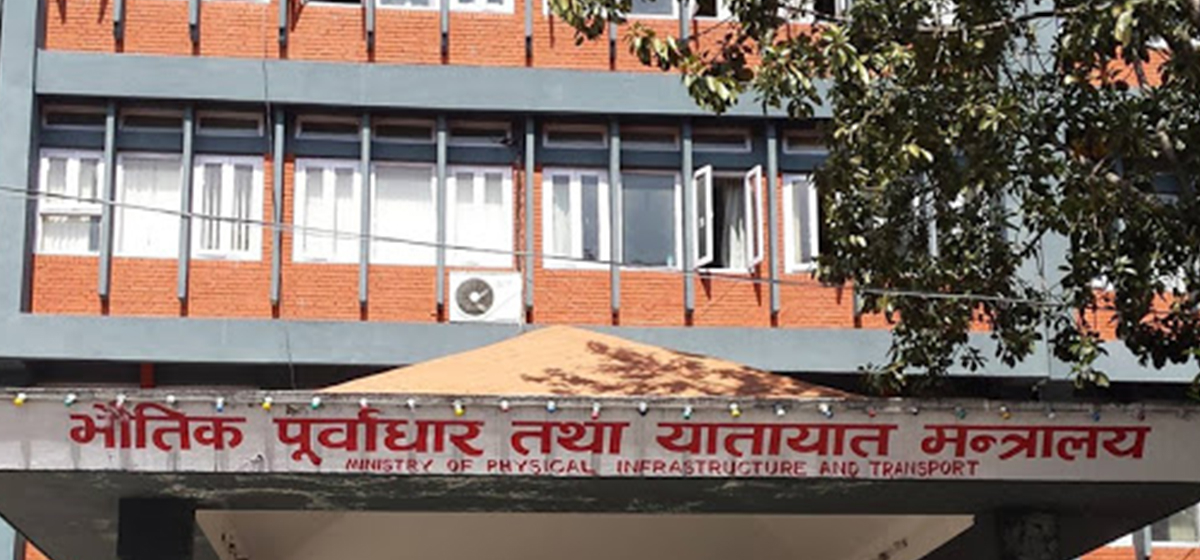
OR
Opinion
Can Nepal absorb the shockwaves of stagflation and growth myth?
Published On: June 18, 2022 11:00 AM NPT By: Kedar Neupane


Kedar Neupane
The author is a founding board member of Nepal Policy Institute, an independent non-political international think tank, and a former staff of the United Nations High Commissioner for Refugees.Neupanek1950@gmail.com
We are not sacrosanct to global events and sustain some forms of impact because Nepal heavily depends on imports of basic food items. It is difficult to foresee how Nepal will navigate through this at the end of the economic tunnel of the projected high growth and join the club with other middle-income countries like China, Bangladesh and Vietnam, for example.
Nepal’s high growth projection is largely based on soft social indicators at a time of growing trade deficit, falling remittances, rising poverty, low employment, low wages, low agricultural yields, climate change, degrading environment, low productivity, and a shortage of skilled labor for attracting domestic and foreign private investments in manufacturing industries. This means the nation will remain in an environment where trading businesses will only focus on quick returns through limited cross-border commodity trading.
The pandemic-induced economic environment has been stagnant, and the recovery of the service sector may not be realized any time soon as contemplated. Fragile socio-economic indicators used for growth estimates are not sustainable. Things may turn problematic since Nepal’s dependence on imports of staple food items is unlikely to improve as long as migrant workers’ remittances keep flowing into the national treasury, and decision-makers do not realize the urgency of resuscitating the sector.
Fallacy of GDP myth and people’s prosperity
Graduation to the next level sounds politically marvelous but, again, the country will confront a new set of unknown challenges. It seems we are not thinking about the new challenges that could overwhelm us in due course of time. Are we ready for graduation to the next level amidst many challenges? But how will it be sustained?
The annual growth rate of eight percent is ambitious with a running rate of seven percent price inflation. It is hard to believe the growth projection will be attained against years of dismal budgetary performance of governments. If this continues, this nation will be trapped inside a long narrow tunnel of ongoing economic nationalism and people’s prosperity will turn into a myth. Surely, it will not uplift the citizens’ living standards from the status of a least developed country (US$ 1.90/person/day/2011 estimate) to the next level of lower-middle-income (US$3.90 person/day/2011 estimate) group without bold, pragmatic, and sustainable economic recovery. Nepal’s economic development strategies should have long grabbed benefits accruing from a globalized trading setting and unfettered supply chain from the initial stages of economic liberalization and by linking the nation as an economic bridge between the two economic giants of the world i.e. China and India.
Unfortunately, economic nationalism of near self-isolation under the pretext of political sovereignty became the biggest roadblock to development and pushed the nation into food insecurity. Nepal now faces shortages of domestically produced food commodities and people’s prosperity is on sovereignty betting. Using mere GDP growth estimates for planning purposes will not generate additional incomes in people’s pockets and ensure a better quality of life and improved living standards. It, then, becomes an economic fallacy of statistical conundrum without prospects of people’s prosperity and rise in real personal incomes.
For moving forward, the government may consider re-examination of the Public-Private Partnership (PPP) relationship and caramelize stronger cooperation with private investors in the economic development pot. Boosting the capacity of manufacturing will depend on re-invigorating ‘ease of doing business’ which is in a terrible stage compared with ASEAN countries. Impediments to growth happen to be: (a) lack of competition policy that ensures the economic viability of investments, sustainability, and market, and (b) lack of high-quality workforce — with relevant and functional education for producing world-class performance — needed for industrial development.
Inferior quality of human capital and shortage of productive workforce
Nepal’s education system is fundamentally faulty because it is not geared to the needs of market dynamism, creativity, and productivity. Workforces need to be regularly recalibrated for new skills, re-skilling, and upskilling matching with the technical know-how of market relevance, and for attaining self-sufficiency. The job market is already dominated by innovation, creativity, and evolving technology. Education without creativity will not improve productivity and growth. Such a workforce will neither inspire nor motivate private investors for investments in large industries and again, in a narrow domestic market, who would want to lose investments? Remember: no country has economically developed without a strong manufacturing base.
Undoubtedly, it calls for bold undertakings by the government to forge partnerships with selected industrialized countries for possible joint investments and joint management of expandable economic sectors having international market potential. For example, collaboration in the travel and tourism industry, and energy and infrastructure sectors could be starting points. The government could, then, focus exclusively on resuscitating domestic production of agricultural commodities for obtaining self-sufficiency and reinforcing resilience.
Pandemic-induced challenges and global impact of Russia-Ukraine war
We are not sacrosanct to global events and sustain some forms of impact because Nepal heavily depends on imports of basic food items. It is difficult to foresee how Nepal will navigate through this at the end of the economic tunnel of the projected high growth and join the club with other middle-income countries like China, Bangladesh and Vietnam, for example.
Countries which followed the bandwagon of liberalized trading have positively attained varying levels of economic growth and prosperity prior to the pandemic. However, our continued reliance on protectionist policies influenced by economic nationalism has not delivered the desired level of growth other than on paper because Nepal has indeed missed the economic train that benefitted several other countries. When will this nation wake up from daydreams of economic falsehood?
Lessons from Sri Lanka’s economic crisis
Many of us may not have realized, from Sri Lanka's experience where people are facing shortages of food, fuel, medicine, and power, that this upper-middle-class economy, (long before other South-Asian nations at this level) has fallen into the same club of countries like Nepal with hundreds of thousands of people falling into a poverty trap. The key lessons from this economic tragedy can be attributed to a high trade deficit, the grandiose associated with the uneconomic pride projects, the fiscal fiasco, and debts. This situation may only be resuscitated through the recovery of robust manufacturing bases, and, perhaps, with a substantial dose of foreign investment.
This crisis is augmented by flawed populist economic policies. Economic recovery will require a much better climate for investment in ‘ease-of-doing-business’ and grant high-level confidence to businesses and investors, ensure security, and adopt more favorable investment strategies. Building strong national resilience to prevent the recurrence of similar crises will require high priority in the domestic production of food commodities.
The government must also demonstrate utmost fiscal prudence, and tap institutional corruption and political impunity. This experience seems relevant to Nepal if we are to read through the public statements, populist policy rhetoric, and protectionist nationalism for doing things better and efficiently.
Agriculture and national vulnerability
It seems we either do not understand it or we are not serious about the significance of the development of agriculture. Nepal is in a serious state of food deficiency for we are highly dependent on the availability of staple food from imports even though we continue to claim Nepal is an agricultural country. In Nepal’s context, we suffer from low productivity, high production costs, and poor product quality. This situation is not a direct function of Nepali youth migrating overseas and looking for better-paid employment away from Nepal. And, targeting them for agricultural policy program failures is neither helpful nor going to lift the country out of the food insecurity trough.
Our competitors in the region have been improving production, supply, and product quality. This has indirectly impacted the domestic market in Nepal and the availability of food ingredients ranging from spices on our kitchen shelves to staple items like rice, lentil, wheat, and cooking oil that is being imported. Ignoring this reality, we continue to make policy declarations, without evidence, that Nepal could export agricultural items internationally and become rich. This falsehood may be one of the reasons for ballooning imports of food items and falling agriculture into abysmal depths. Clearly, we are ill-prepared to feed the nation while wrapping ourselves with piles of challenges, and resorting to protectionist policy, and the unpragmatic economic myth of GDP estimates.
Some hard shells require breakings prior to charting a way forward
Past performance of governments raises serious doubts over political commitment and ability to implement pragmatic actions. Moving forward realistically requires out-of-the-box rethinking and bold actions for re-instilling the people’s confidence in good governance by tackling the following questions, to begin with:
Ø Who in the government has the right insights into the depth of the national and international political economy environment? Is it the politicians or bureaucrats?
Ø How independent is the monetary and fiscal policy making process in Nepal and how are these set? Is it by the politicians, bureaucrats, or technocrats?
Ø Who is the architect of the ambitious development of central plans in a liberalized global economic setting where private investment plays the lead role? Why have we failed to inspire private investments?
Ø How come Nepal is still a poor country while other neighbors in Asia have done far better than us? In the early 60s Nepal was not far off from China and Korea so why did we not notice their achievements?
Ø How come even after more than three decades of poverty eradication programs citizens are still trapped in the intergenerational poverty cycle?
Ø Who is the nation’s poverty reduction expert? Is it the politicians or bureaucrats? Do we not know if the citizens in our country have not been passing a single day without being hungry or missing a meal due to poverty? Who is monitoring this?
Ø Why is the nation failing to uplift people out of poverty despite years of rhetoric to eliminate poverty? Or is this designed only as a mouthpiece utterance of government and political establishments?
Ø How come employment opportunities for the nation’s youth, poor and marginalized segments are not improving? Does the government truly understand the reasons for unemployment and the situation in the country?
Ø Do government bureaucrats, legislators and elites genuinely understand the needs and interests of Nepali migrant workers, value their contributions to sustaining the economy and provide support services without creating bureaucratic hurdles for them?
Ø Who needs a bureaucracy in policymaking that is interested in creating only bureaucratic hurdles and fails to grasp the aspirations of people as well as the hard-working migrant workers?
Ø Who in the government guides and advises pragmatic economic policies? Is it the politicians, bureaucrats, or technocrats?
Ø How come government policies fall into bureaucratic holes and fail to inspire genuine collaboration of private sector entrepreneurs and international investors?
Ø How come successive governments fail to streamline processes across institutions, reduce and cut red tape, and put a permanent plug on grafts for it is a well-known fact that Nepal’s political establishment and bureaucracy suffer from structural weaknesses and inefficiencies that help to grease widespread corruption?
Ø How come legislators, elites and media fail to stand tall against those politicians and bureaucrats who are among the violators of anti-corruptions, and accept kickbacks from government projects and supply contracts?
Ø Why is the government failing to adopt a system of a performance-audit process to examine the efficiency and effectiveness of resource allocations instead of continuing with cheap low-quality work in the name of being economy-oriented?
Ø Why do we fail to grasp the impact of degrading environment, climate change and low agricultural yields and other causes of low production, supply, and unavailability of food commodities?
You May Like This

Nepal's Import rises by 53.3 percent in 11 months
KATHMANDU, July 23: In 11 months of the fiscal year 2021/22, import of goods and services increased to Rs 185... Read More...

Nepal imported fruits worth over Rs 11 billion in the first nine months of current FY
KATHMANDU, April 25: Although agriculture has been a major sector of the country's economy as the main source of livelihood,... Read More...

Nepse begins the week in the red
KATHMANDU, Jan 14: Stocks came under pressure throughout the first trading day of the week. The benchmark Nepal Stock Exchange... Read More...
Just In
- Over 16,000 paragliding flights conducted in one year in Pokhara
- MoPIT prepares draft of National Road Safety Act, proposes rescue within an hour of an accident
- Light rainfall likely in hilly areas of Koshi, Bagmati, Gandaki and Karnali provinces
- Customs revenue collection surpasses target at Tatopani border, Falls behind at Rasuwagadhi border in Q3
- Rain shocks: On the monsoon in 2024
- Govt receives 1,658 proposals for startup loans; Minimum of 50 points required for eligibility
- Unified Socialist leader Sodari appointed Sudurpaschim CM
- One Nepali dies in UAE flood


















Leave A Comment